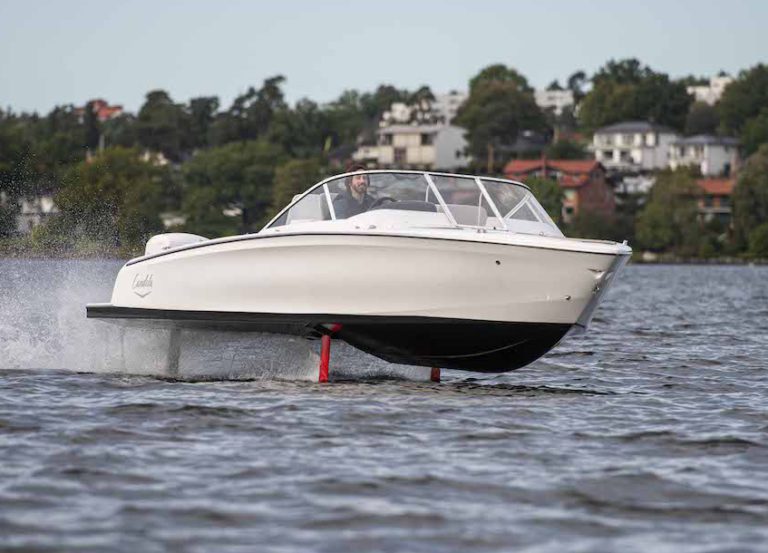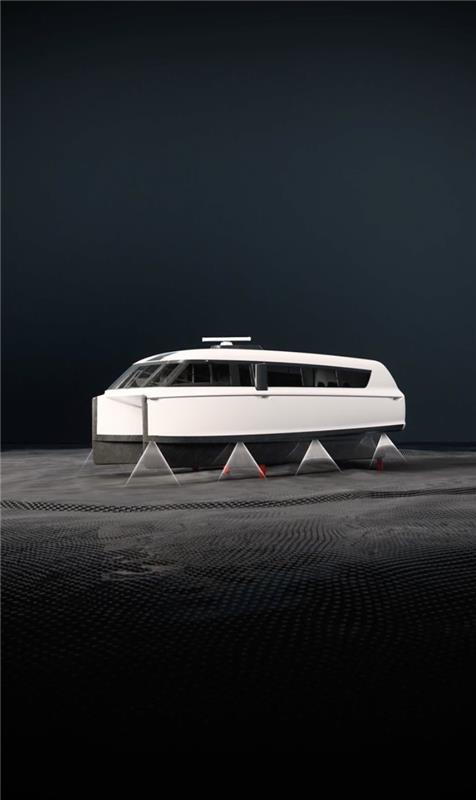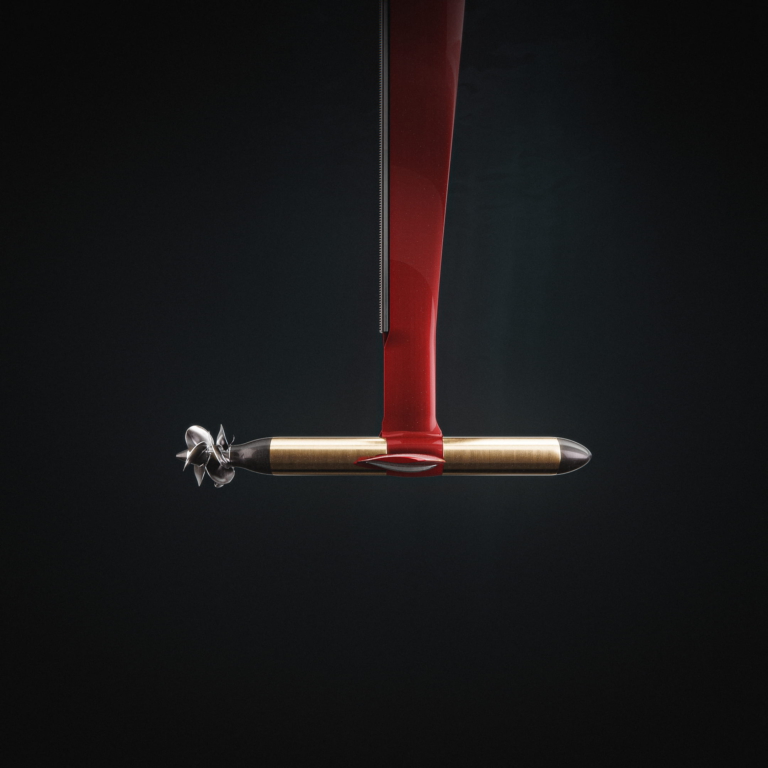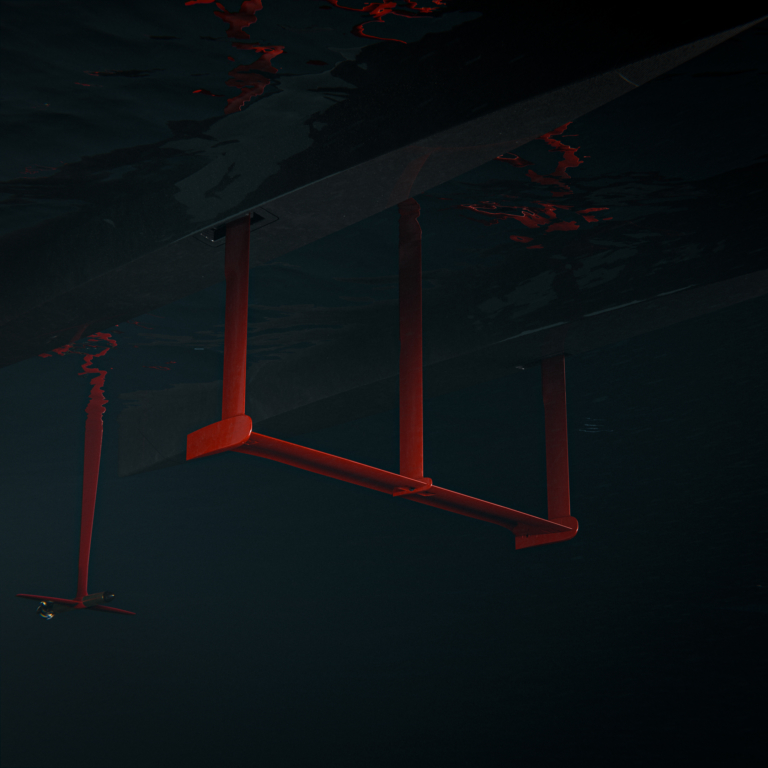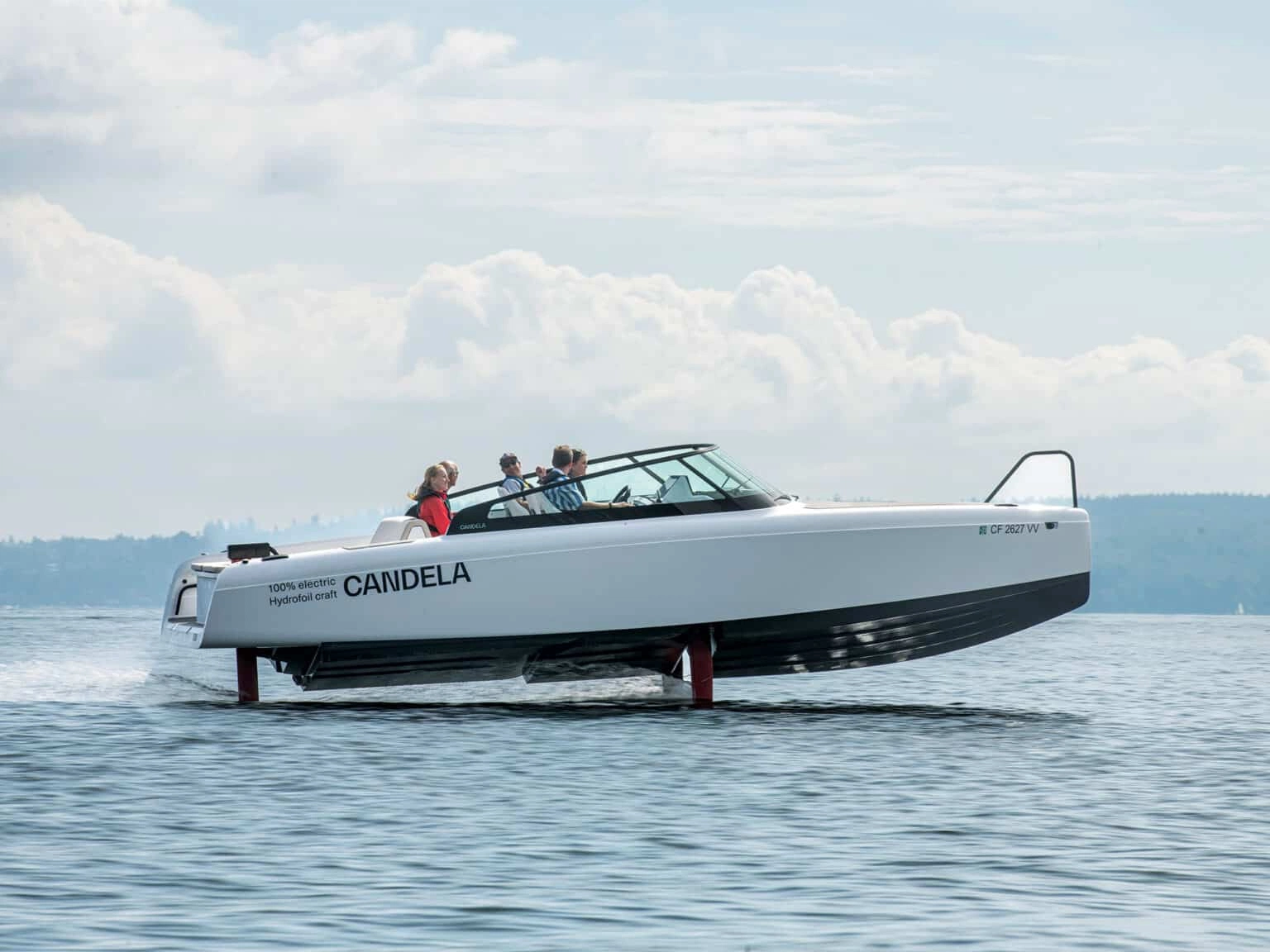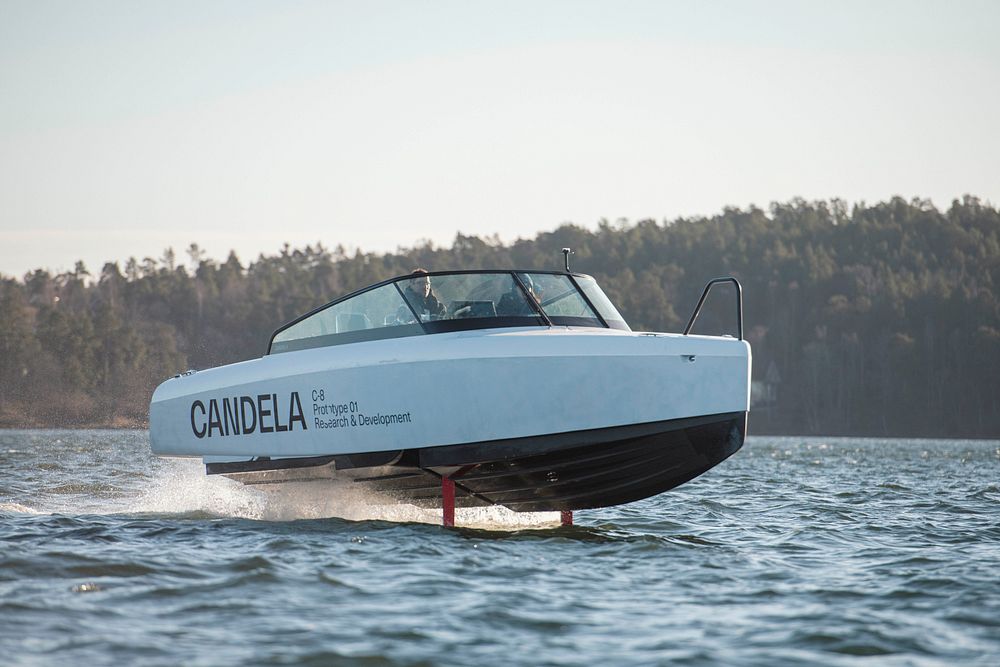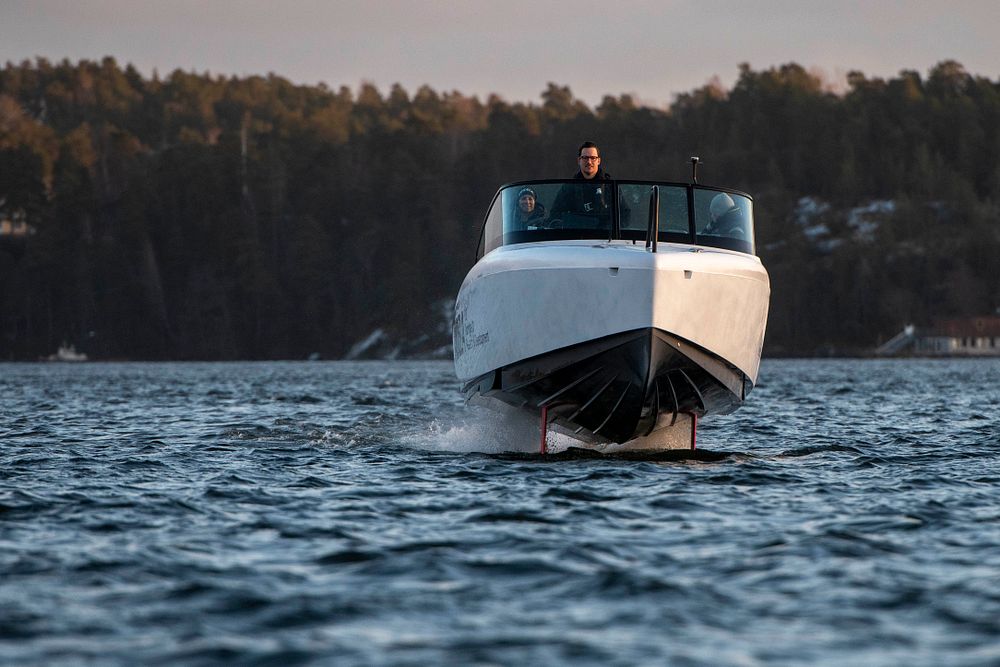The transition to zero-emission boats has been hampered by the inadequate performance of conventional electric boats. Propelling a planing, conventional speedboat through the water requires enormous amounts of energy, which drains even the biggest lithium-ion batteries after only 30-45 minutes of spirited driving.
Flying above the waves on computer-controlled hydrofoils – underwater wings – Candela’s craft use 80% less energy than conventional boats. This efficiency translates into far longer range and higher speeds on pure battery power.
What makes hydrofoils so effective is the dramatic reduction in drag. A typical planing hull has a 4-to-1 lift-to-drag ratio, while the Candela C-8 has a 20-to-1 lift advantage. Cruising at 20 knots, the C-8 can fly for 50 nautical miles on its 44 kWh battery. This is 2-3 times longer than conventional electric speedboats with 300% bigger batteries.
But the C-8 offers other and new benefits over any other boat. Actively stabilized hydrofoils allow Candela electric boats to leave no trace; no pollution, no noise, no wake.
The C-8’s digital Flight control system automatically adjusts the foils to keep the boat level and steady, even in adverse weather conditions. The ride is silky smooth in choppy waves and side winds. The low energy usage directly translates into an almost non-existent wake. And the ride is silent, thanks to Candela’s newly developed Candela C-Pod direct-drive electric pod motor.
In an industry-first for leisure boats, the C-8 offers fly-by-wire steering and Autopilot features, allowing for more relaxed driving over long distances. When the driver lets go of the wheel, the boat will automatically steer the set compass course. More features will follow as the C-8 is upgradeable Over-The-Air.
Candela has refined its hydrofoil technology and Flight control software since the open sportsboat Candela C-7 was introduced in 2019. With experience from the C-7, Candela’s 70+ engineers and technicians have designed the C-8 for rapid mass production. They are targeting a rate of 400 units per year in 2024.
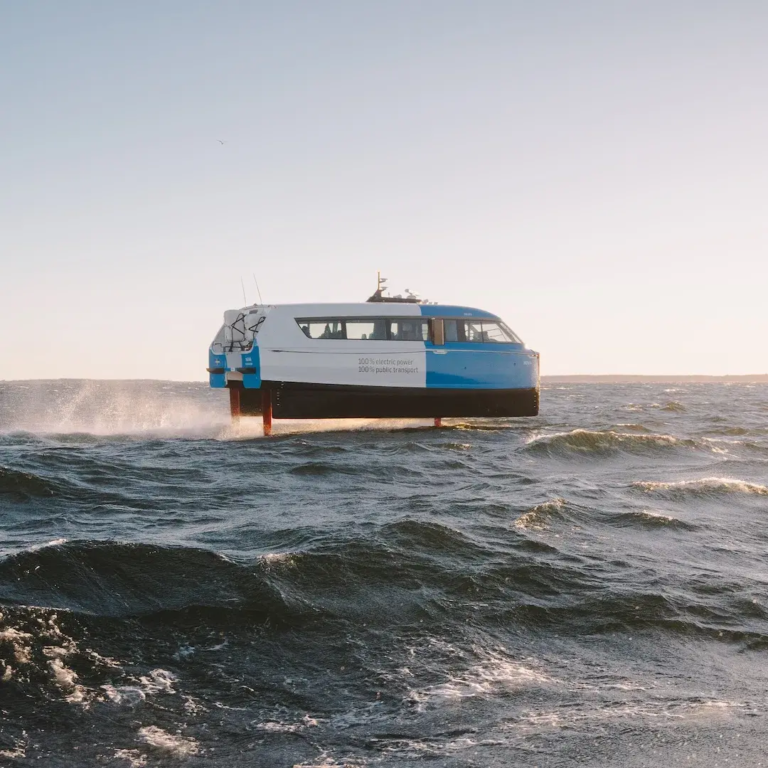 Overview
Overview 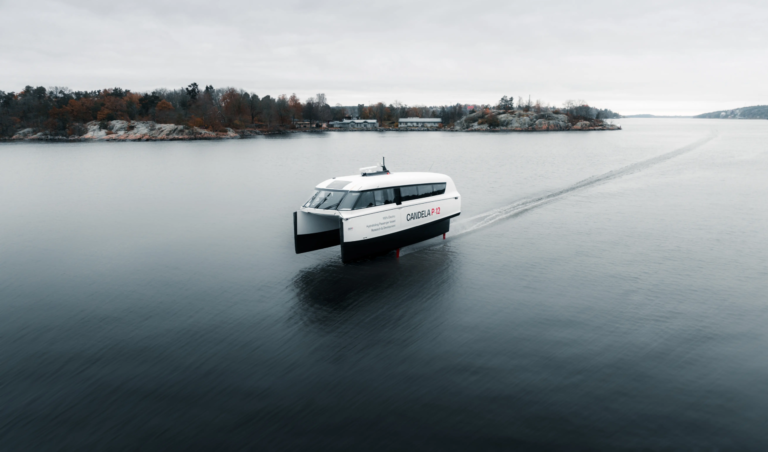 P-12
P-12 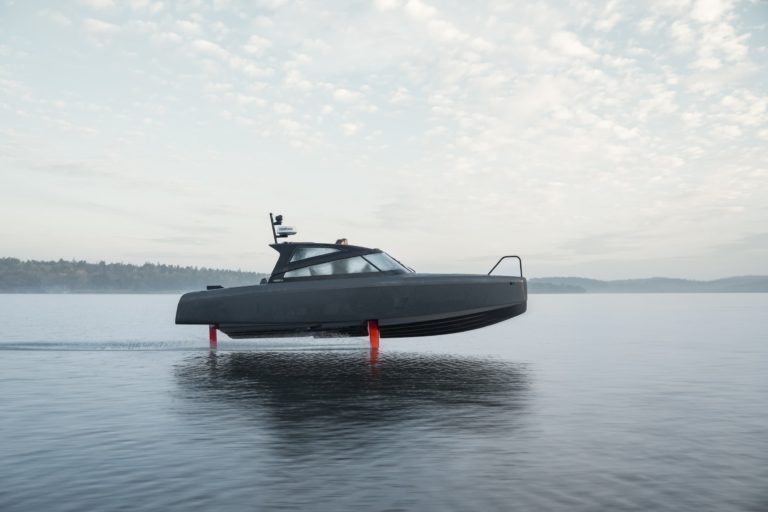
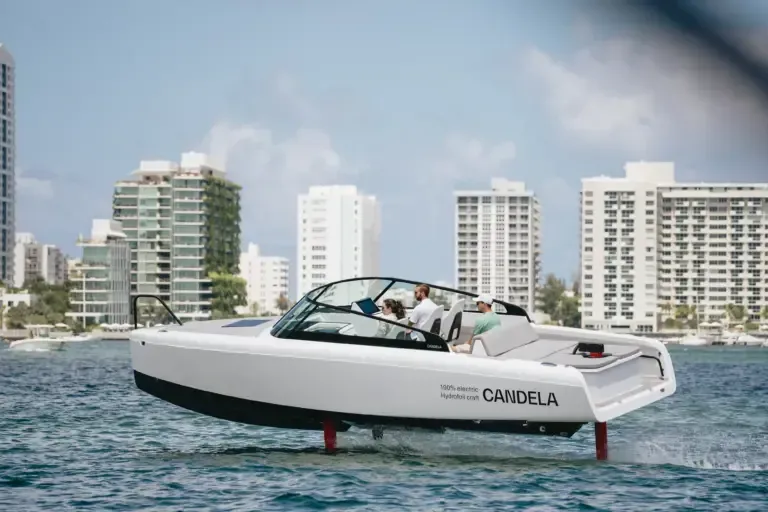 C-8
C-8 